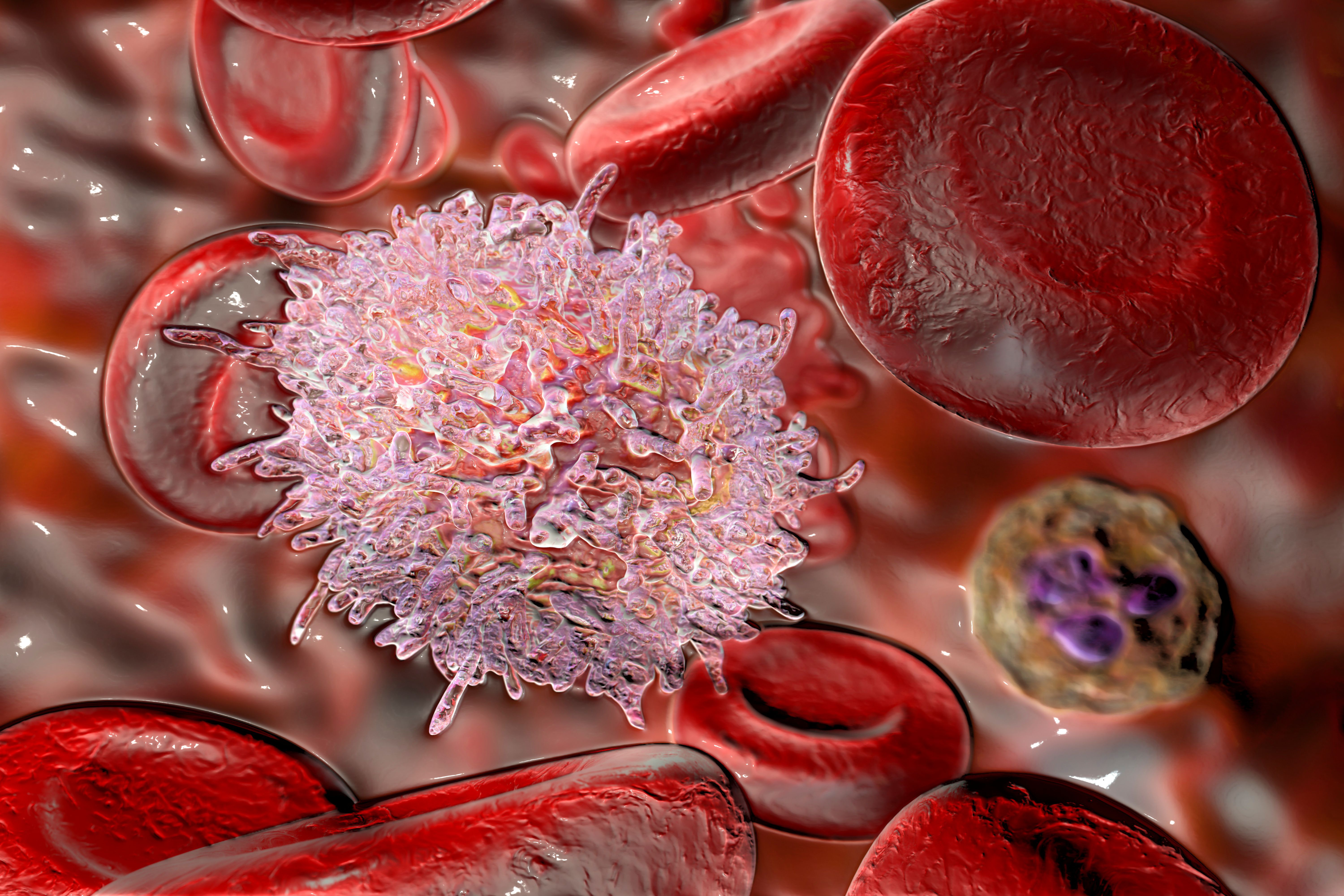- Center on Health Equity & Access
- Clinical
- Health Care Cost
- Health Care Delivery
- Insurance
- Policy
- Technology
- Value-Based Care
B-Cell Activating Factor Levels May Predict Reduced Risk of CLL, Study Finds
A recent study has found that higher serum levels of B-cell activating factor and anti-CCP3 are associated with a reduced risk of developing chronic lymphocytic leukemia (CLL), suggesting potential biomarkers for assessing CLL risk.
New research findings suggest an association between B-cell activating factor (BAFF) serum levels and the risk of developing chronic lymphocytic leukemia (CLL). The study, which focused on the role of BAFF and other biomarkers in immune dysregulation in CLL, was published in Blood Cancer Journal.1
CLL, a type of cancer that originates from B-cells, has long been associated with immune system abnormalities, although the biological mechanisms underlying these associations have remained unclear. This study aimed to clarify these mechanisms by examining pre-diagnostic serum immune biomarkers and their relationship with CLL risk in a prospective nested case-control study.
Leukemia cell concept | image credit: Dr_Microbe - stock.adobe.com

The researchers utilized data from the Prostate, Lung, Colorectal, and Ovarian (PLCO) Cancer Screening Trial, which included over 154,000 participants aged 55 to 74 years. Specifically, they focused on participants from the intervention arm of the trial who had provided blood specimens at baseline and subsequent screening exams (n = 77,444). A total of 832 participants developed a lymphoid malignancy, including 221 cases of CLL or small lymphocytic lymphoma. Controls (n = 809) were selected based on their cancer-free status at the time of case diagnosis and matched to cases by age, race, gender, calendar year of blood draw, and study year.
The study measured BAFF levels using pre-diagnostic stored serum alongside other biomarkers commonly associated with autoimmune conditions, including anti-cyclic citrullinated peptide-3 antibody (anti-CCP3) and two rheumatoid factors (RF-IgM and RF-IgA). The findings revealed that serum levels of BAFF were notably lower in individuals who developed CLL compared to controls (562.0 pg/ml vs 640.2 pg/ml, P = .003). Additionally, anti-CCP3 levels were also lower in cases compared to controls (9.66 u/ml vs 10.68 u/ml, P = .001), while no significant differences were observed for RF-IgM and RF-IgA between cases and controls.
Multivariate regression analyses demonstrated a significant reduction in CLL risk with higher BAFF serum levels (Ptrend =5 × 10−6). The highest quintile of BAFF was associated with an 80% reduction in CLL risk compared to the lowest quintile (OR, 0.20; CI, 0.11–0.37; P = .0001). Importantly, this association persisted even after excluding individuals with autoimmune diseases and adjusting for other variables. The study also found that the protective effect of BAFF was consistent regardless of the time from blood draw to diagnosis. BAFF remained protective for CLL even after restricting the analysis to cases diagnosed more than 10 years after the blood draw (OR, 0.40; CI, 0.19–0.83; P = .01).
The study also investigated the role of anti-CCP3, finding that elevated levels were associated with reduced risk of CLL, with the highest quintile showing a 56% reduction in CLL risk compared to the lowest quintile (OR, 0.44; CI, 0.26–0.74; P = .002). While anti-CCP3 appeared to remain protective for CLL after restricting the cases diagnosed to more than 10 years after blood draw, it was not statistically significant (OR, 0.73; CI, 0.46–1.16; P = .18). No significant associations were observed with the rheumatoid factors RF-IgM and RF-IgA.
These findings are consistent with previous studies that have suggested a protective role for BAFF in CLL risk.2 BAFF is known to promote B-cell maturation and differentiation, and “By promoting maturation, increased BAFF levels may reduce the availability of early-stage B-cells, decreasing the likelihood that one of those immature cells acquires pathologic alterations leading to a malignant CLL clone,” the present authors explained.1 They also noted, “Our findings suggest that BAFF could be a useful biomarker to assess risk among individuals at high risk, such as those with monoclonal B cell lymphocytosis.”
References:
- Frost E, Hofmann JN, Huang WY, Frazer-Abel AA, Deane KD, Berndt SI. Serum levels of B-cell activating factor are associated with a reduced risk of chronic lymphocytic leukemia. Blood Cancer J. 2024;14(1):132. doi:10.1038/s41408-024-01106-7
- Berke Menteşe İ, Yegin ZA, Gökçen S, et al. Prognostic significance of serum BAFF, APRIL, TACI and BCMA levels in chronic lymphocytic leukemia. Indian J Hematol Blood Transfus.2019;35:265-271. doi:10.1007/s12288-018-1029-7
